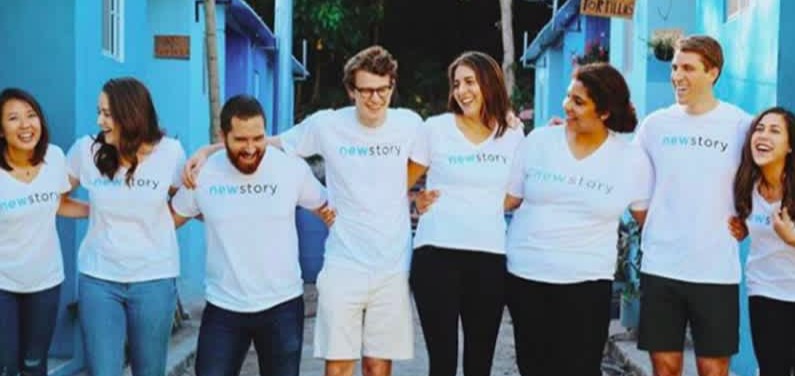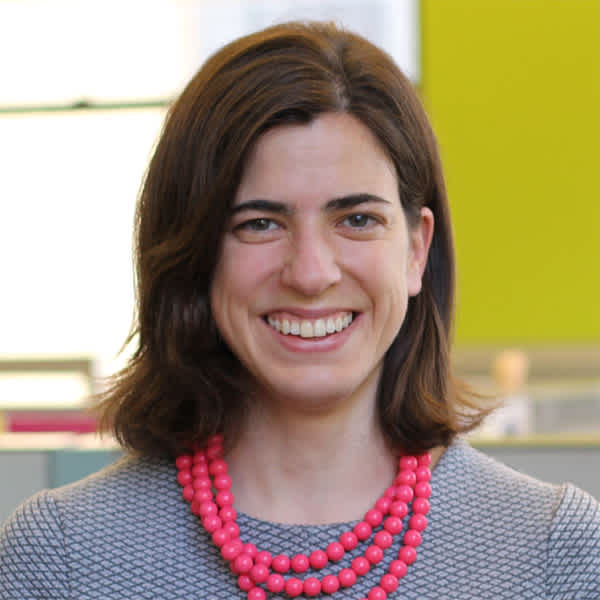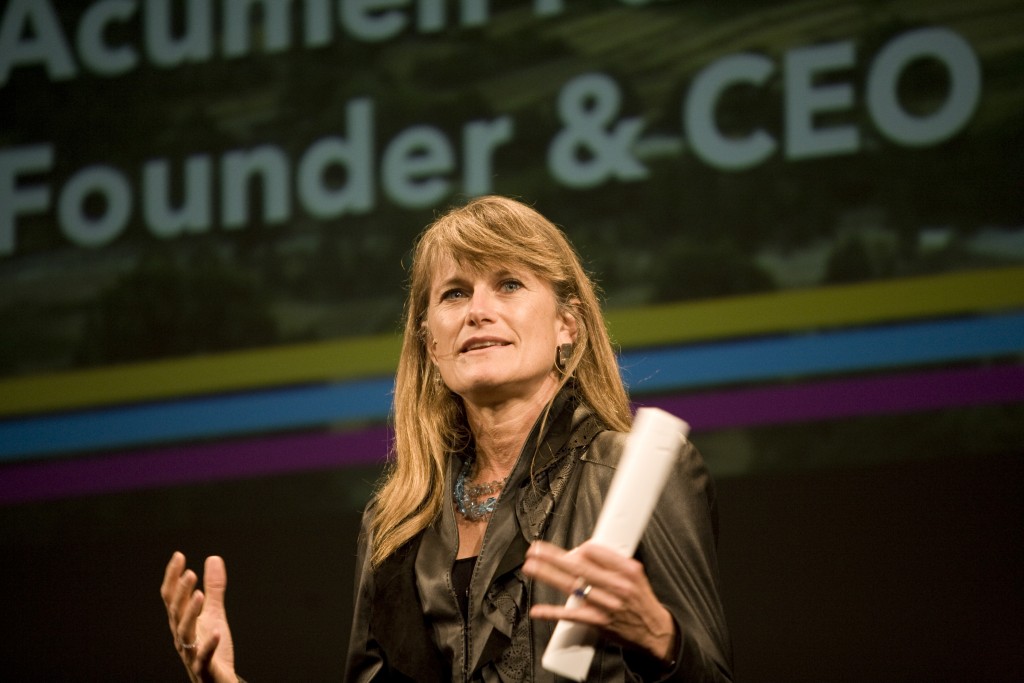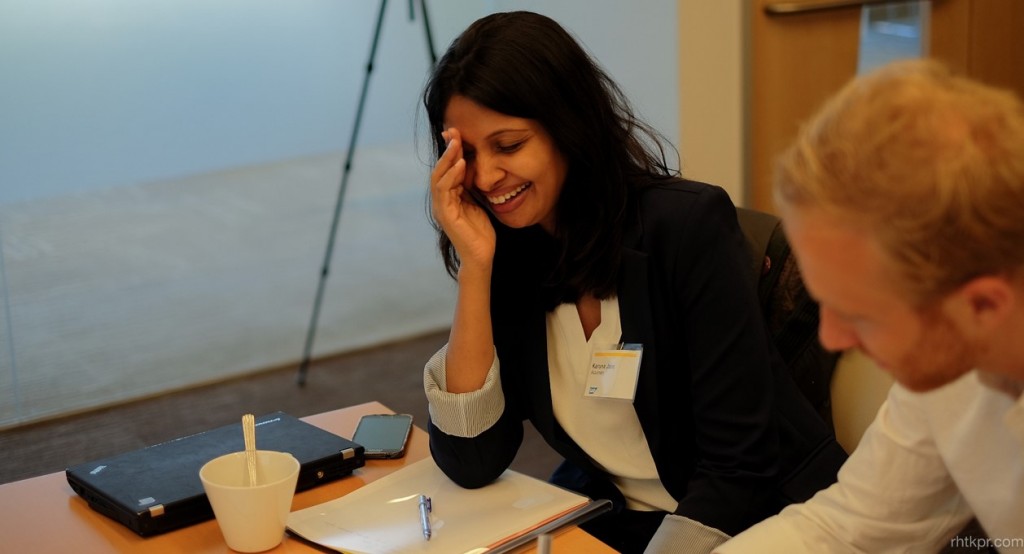Redefine Success
How one social enterprise attracts top silicon valley talent to build homes in Haiti
Hear directly from one of Fast Company’s 10 Most Innovative Nonprofit Organizations.
April 20, 2017
Remarkably, behind these numbers are just nine people. To get those results, it’s clear that every member of the startup has had to pull their own weight and then some.
Acumen Academy sat down with Alexandria Lafici, a Co-Founnder and COO, to get a behind-the-scenes look at how the social enterprise has structured everything from their organizational culture to their interview process (hint: it sometimes involves trips to an art museum). Read on to learn how they lure top-brass engineering, impact, and operational talent away from Silicon Valley companies to tackle the global housing crisis.
Make your values come to life
“We’ve been very intentional about defining our organizational values,” Alexandria says, “Even when it was just the three of us co-founders going through Y Combinator, we outlined what we should value so that when we were hiring, we knew we should be looking for those same qualities.”
To come up with their original values, the team tossed around a lot of ideas. The six that eventually stuck were
- Simplify
- Improve Through Learning
- Express Gratitude and Empathy
- Think Big, Break Down, and Execute
- Change Trajectories
- “Team of founders”
Alexandria explains that the final one—“team of founders”--means that everyone in the organization should “own the vision and act in the capacity of the founder. We want people who are doers and have a burning desire to make things happen, and then do it. We’re looking for people who take ownership and have a proven track record of results.”
Initially, the team was so busy that they didn’t have much time to think about how to intentionally make these values come to life in the context of their daily routines. But as they began to hire, the founders quickly realized that emphasizing them would be a key differentiator.
“Having gone through Y Combinator, most of my friends are founders,” Alexandria says, “We talk a lot about building culture and hiring, but I realized that having clearly defined values that you actually invoke is pretty rare for startups. This made me realize that we needed to have our values become living things, rather than grow meaningless.”
One of the most effective ways the team brought their values to life was to create a Slack channel specifically dedicated to values shout-outs. “On Slack, people take a few minutes and call someone out for embodying the organizational values,” Alexandria explains, “For example, I could say: ‘I saw Matthew sending out thank you cards for meetings’ and add the hashtags #gratitude and #empathy. These shout-outs happen almost every day. And it keeps the values top-of-mind for people.”
Hire slow and make sure you get to a "hell yes"
To find people who will fit with and contribute to your social enterprise’s culture takes time. In the early days, New Story just consisted of Alexandria and her two co-founders and everyone did a little of everything. “Basically, we came out of Y Combinator with the philosophy that you shouldn’t hire until you’re bleeding. We realized that, especially when you’re small, each new hire has a significant effect on the culture so you have to be really careful to get it right. If you wait, you start to see where the real holes are and to identify what you need to have versus what you want to have.”
Alexandria admits that having the discipline to hire slow can be difficult. Right after they came out of Y Combinator, the startup was getting a lot of publicity and gaining momentum fast. They decided to hire someone to do manage PR and marketing. “But we ended up realizing that hire wasn’t the best decision,” Alexandria says, “We realized that, at that stage, marketing and PR was a nice-to-have, but not a core competency. We also learned that we were so overworked and overwhelmed that we rushed that process and moved too quickly to bring someone new onboard. Now we’ve learned that no matter how long it takes, we have to get to a point where it is a ‘Hell yes! We have to get this person.’ Otherwise, it’s a ‘Hell no.’”
Find your team's superpowers. Then make sure they can use them.
One way New Story determines what roles they need to hire for comes from looking at the distinct skills their current team members have and the percentage of the time they actually spend tapping into those abilities. “You want to avoid a situation where you have Steve Jobs doing the accounting,” Alexandria says, “Sure, maybe he’d be good at it, but that would not be using his superpower and so it would ultimately hurt the organization.”
To avoid having Steve Jobs balancing the books, you need to look closely for everyone’s core competencies. These are the things that these people do better than almost everyone else on the job market. For example, one of New Story’s co-founders, Brett is distinctly good at building large-opportunity relationships--like finding a corporation to underwrite the construction of an entire community. At the same time, New Story’s crowdfunding model requires a constant stream of smaller donations from individuals. For a time, keeping this stream of small-scale fundraising going was clogging up Brett’s time, distracting him from being able to bring in the big deals that he was uniquely positioned to close. At that point, Alexandria says the team realized that they needed to hire someone to manage the grassroots growth so that Brett could adequately execute his “superpower.”
Similarly, they realized that their CTO was incredibly passionate about developing technology strategy, and less enamored with troubleshooting individual lines of code. “When he’s bogged down fixing bugs, he is not only not leveraging his highest potential, but he’s also not going to remain happy in his role over time,” Alexandria says. As a result, she recommends looking at the distinctive passions and strengths each person on your team brings to their role. If their time is getting crowded with things that do not tap into their strengths, that is often a good sign that it might be time to hire someone new—both to drive your organization’s continued growth and to keep your current workforce feeling that their roles are interesting and meaningful.
Recruit the right people by focusing on growth potential instead of growing stock options
Once you figure out the new role that you need to hire for, how should you attract the best candidates? Alexandria says that for prospective employees, the biggest value proposition they offer is the growth potential. “You want to excite people about the opportunity to work on a team with an ambitious mission and the opportunity to be a leader in that effort,” Alexandria says, “In a small organization, you have the opportunity to exceed your experience. The growth potential is major. When we were hiring our Impact Manager we told her that she could definitely go work for a more-resourced team, but she also had the potential to build something from the ground up at New Story and be the one positioned to deliver a TED talk on the topic a few years down the line. That was exciting to her.”
As a non-profit, New Story Charity is unlike other startups that go through Y Combinator in that it can’t offer equity to their employees. Yet Alexandria actually sees that as an advantage in the hiring process. “Because we’re not giving equity and paying as much, we have a self-filtering mechanism to find the people who are truly looking to achieve social impact. A lot of companies in Silicon Valley say that they’re changing the world. But when you’re a nonprofit, you naturally screen for the people for actually care about impact and not just profit.”
That said, Alexandria has said that she’s learned to fight the stigma of high salaries in the non-profit sector. “The team is the most valuable asset to any organization,” she explains, “In nonprofits penny-pinching feels natural because you’re not generating revenue but I’ve come to believe it can be a get-what-you-pay-for-situation. We’re already filtering for the kind of people who care about social impact and don’t put the money first. But there is a threshold of people knowing their worth. You’re not going to be able to get extremely talented people if they can’t make ends meet.”
In fact, New Story’s board has actually encouraged to spend more on talent. “A happy team is one that doesn’t constantly have to think about finances and can use that energy to perform better at work,” Alexandria observes, “There is a stigma associated with comfortable salaries in the non-profit space, but that’s to the determinant of our sector. Top talent is going to be what helps us achieve our theory of change more effectively. Investing in people should be a top priority so we work hard to make resources in our budget available.”
Structure a smart and inclusive interview process
Once the team has recruited a volume of candidates, they begin the hard work of identifying the right person for the role. One strategy Alexandria recommends is having candidates submit a two-minute video as part of their application. “You can assess communication and how someone expresses themselves quickly,” she explains, “Can they clearly articulate why they want to join New Story and why they’re a fit for the role? In two minutes, you should be able to get that.”
After reviewing the videos and applications, she typically conducts a standard 30-minute phone screen with candidates before assigning them a performance task. “Typically the task is actual work,” Alexandria says, “For the last person I hired, I thought through what they were going to be doing in their first few weeks and gave them a real assignment. So then when the person started, they already had something to work on. We also give them access to all of the feedback we had about their assignment. That creates transparency and enables learning right from the start.”
After someone passes through the phone screen and performance task, New Story brings the candidate in for one-on-ones and team interviews. They’re asked lots of scenario-based questions designed to assess how well the candidate aligns with the organizational values. For example, to assess the “team of founders” value, Alexandria will pose the question: “Describe a time at work where you have done something outside of your job description.” “In a small and fast-paced company, you have to not only excel in your role, but also be willing and excited to learn and contribute outside of your direct responsibilities”, Alexandria explains.“That is also one of the best perks of working at a start-up. You get to learn so much and have a hand in projects that differ from or exceed your experience.”
Finally, the top candidate reaches a “capstone” phase where they ask the individual to come and spend a whole day with the team including doing real work and having lunch. “Having them work in our space is important not only for us, but also for the candidate,” Alexandria says, “We want them to try the dress on before they buy it, so to speak. We want them to figure out if they’re comfortable in our office because they’ll be spending a lot of time there.”
They also have other team members participate in the interview process by doing things like taking them to lunch or visiting a museum so that they can assess whether the person is someone they would genuinely get along with. “Because we’re still so small, the organization is still like a family,” Alexandria says, “So everyone should be able to have a vote as to who joins the family. We hire people whose opinions we really value. So we reinforce to the team that we expect them to step up as founders and have a say in who else joins.”



